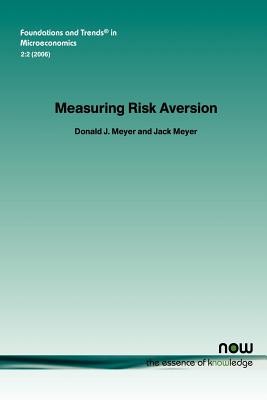
- We will send in 10–14 business days.
- Author: Donald J Meyer
- Publisher: Now Publishers
- ISBN-10: 193301945X
- ISBN-13: 9781933019451
- Format: 15.6 x 23.4 x 0.6 cm, minkšti viršeliai
- Language: English
- SAVE -10% with code: EXTRA
Reviews
Description
The measurement of the propensity to accept or reject risk is an important and well researched topic. Measuring Risk Aversion summarizes, discusses, and interprets the published research on this topic for decision makers who maximize expected utility. Estimates of the magnitude of relative risk aversion range widely from near zero to values approaching one hundred, and whether the slope of the risk aversion measure is positive, negative or zero is an unsettled question for many measures, including relative risk aversion. Measuring Risk Aversion show that a substantial part of this variation is due to the differences in the outcome variables used in the analysis. Measuring Risk Aversion provides a detailed discussion of the adjustment of risk references and how to go about making such adjustments to a common scale. By adjusting all information to this common scale, results across studies can be easily summarized and compared, and the body of information concerning risk aversion can be examined as a whole rather than as individual parts.
EXTRA 10 % discount with code: EXTRA
The promotion ends in 23d.18:23:35
The discount code is valid when purchasing from 10 €. Discounts do not stack.
- Author: Donald J Meyer
- Publisher: Now Publishers
- ISBN-10: 193301945X
- ISBN-13: 9781933019451
- Format: 15.6 x 23.4 x 0.6 cm, minkšti viršeliai
- Language: English English
The measurement of the propensity to accept or reject risk is an important and well researched topic. Measuring Risk Aversion summarizes, discusses, and interprets the published research on this topic for decision makers who maximize expected utility. Estimates of the magnitude of relative risk aversion range widely from near zero to values approaching one hundred, and whether the slope of the risk aversion measure is positive, negative or zero is an unsettled question for many measures, including relative risk aversion. Measuring Risk Aversion show that a substantial part of this variation is due to the differences in the outcome variables used in the analysis. Measuring Risk Aversion provides a detailed discussion of the adjustment of risk references and how to go about making such adjustments to a common scale. By adjusting all information to this common scale, results across studies can be easily summarized and compared, and the body of information concerning risk aversion can be examined as a whole rather than as individual parts.


Reviews